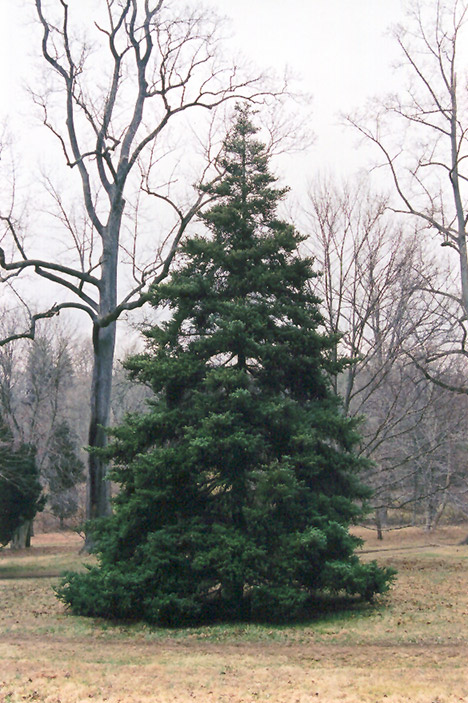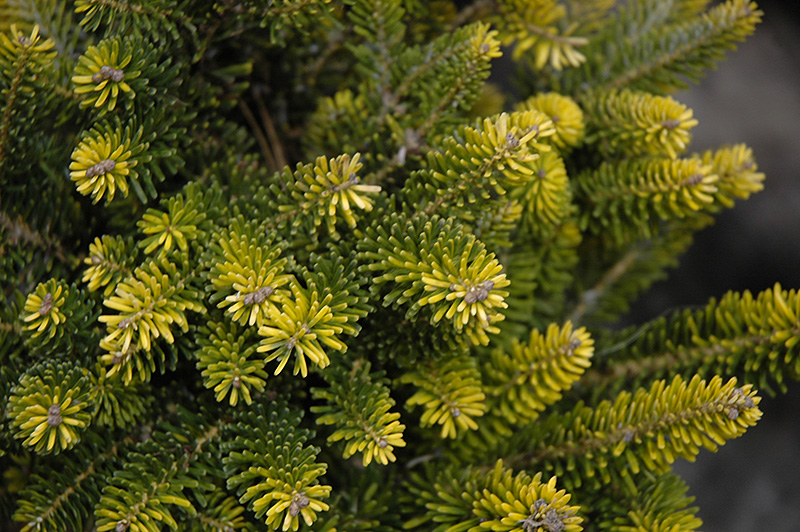* This is a "special order" plant - contact store for details
Height: 25 feet
Spread: 15 feet
Sunlight:
![]()
![]()
Hardiness Zone: 4b
Description:
An uncommon yet very attractive fir tree with white-banded needles for a beautiful color effect; a good size for home landscapes, but particular as to siting
Ornamental Features
Korean Fir is primarily valued in the landscape for its distinctively pyramidal habit of growth. It has attractive bluish-green evergreen foliage. The needles are highly ornamental and remain bluish-green throughout the winter. The purple fruits are held in cones from late summer to late winter. The smooth gray bark adds an interesting dimension to the landscape.
Landscape Attributes
Korean Fir is an evergreen tree with a strong central leader and a distinctive and refined pyramidal form. Its average texture blends into the landscape, but can be balanced by one or two finer or coarser trees or shrubs for an effective composition.
This is a relatively low maintenance tree, and usually looks its best without pruning, although it will tolerate pruning. It has no significant negative characteristics.
Korean Fir is recommended for the following landscape applications;
- Vertical Accent
Planting & Growing
Korean Fir will grow to be about 25 feet tall at maturity, with a spread of 15 feet. It has a low canopy, and should not be planted underneath power lines. It grows at a slow rate, and under ideal conditions can be expected to live for 60 years or more.
This tree does best in full sun to partial shade. It requires an evenly moist well-drained soil for optimal growth. It is not particular as to soil pH, but grows best in sandy soils. It is quite intolerant of urban pollution, therefore inner city or urban streetside plantings are best avoided, and will benefit from being planted in a relatively sheltered location. Consider applying a thick mulch around the root zone in winter to protect it in exposed locations or colder microclimates. This species is not originally from North America.
* This is a "special order" plant - contact store for details








